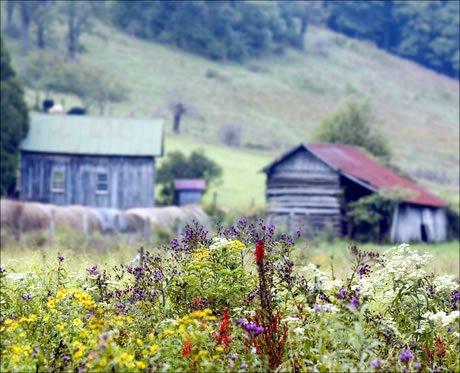Home Economics

The standing corn browns and curls and our deep valley grows colder in the shadows of these shortening September days. The canning is laid by, and we celebrate the end of long months of kneeling servitude to the trowel and the watering can. We look forward at last to reclaiming our days from the tyranny of the garden. But our glimpse of freedom is a false and short-lived interlude of recovery; our responsible guardianship only changes in the fall from gardening to the unending care and feeding of the woodstove.
We decided many years ago to heat the house with wood for as many winters as we are able. Every fall I have to explain this odd logic to myself one more time, just as I find myself standing in garden mud in the humid heat of early August when I blow the gnats away from my eyes, and question the economy of being a grower of vegetables. It would be so much easier just to pay and be a consumer. But we garden; then we gather wood–two self-inflicted but mostly joyous burdens in our year, not all that different in their end products or purpose, or in their impact on our lives for good.
Neither heating with wood nor growing a year’s worth of garden vegetables is the path of least resistance, greatest convenience, or efficiency of our finite personal energies. In both these labor-intensive endeavors there is the illusion of control over our lives in at least these small ways. I feel very much like the omnipotent dictator as I plan my attack on woodlot or corn rows, at every step. But when I am honest with myself, I have to acknowledge my utter dependence on the workings of sun-heat, rain-sap, and soil-plus-time.
I carry the heavy, dirty pieces of wood one by one from forest to the truck to woodpile to stove; I stoop, bend, tug, water, hoe, weed, lift, and harvest each of a dozen varieties of prolific root and fruit. And in the end, I must confess that in all this, I am just the middleman, a facilitator standing by with relatively little control and little to do with the process but collect what nature makes of her own secret raw materials.
Our comfort over winter that comes from filled canning jars and wood’s warmth depends on the internal wisdom of roots, trunks and leaves. It relies, too, on the integrity of our woodcutter’s tools and gardening utensils and the strength of these bodies of ours. All must work, together-nature, tool and human hands. Our woodpile and the yellow, green and gold canning jars lined up like functional art in the dark vault of the cellar are testimony that-for one more year-we have lived in a blessed harmony with our wits, our own bones and with the land that somehow sustains us. The warmth we will feel is not all measured in degrees, just as the nourishment from gardening is not measured merely in calories.
Now, the garden of the year is past. Lessons in the cold months ahead won’t come from the fenced domain of the garden but from open, wooded hillsides of Goose Creek; from the splitting and stacking and stoking that will keep fires throwing flickers of flame through the glass door of the wood stove into this warm room from late September until mid-April. Then, as the days lengthen in the spring and the soil thaws through mud to crumbling dark loam once more, the garden’s needs will become the focus of our labors. Ashes to ashes, dust to dust. And so it goes.
In these shorter days of autumn, as we move our energies from garden soil to open forest, we have come to a changing of the guard. Our garden is hibernating, and it is time to go hunt the bare bones of walnuts, locusts and oaks. It is hard work. It is good work. It is our economy, what we do, and in my ledger, there is no better pay for a day’s work than this.

